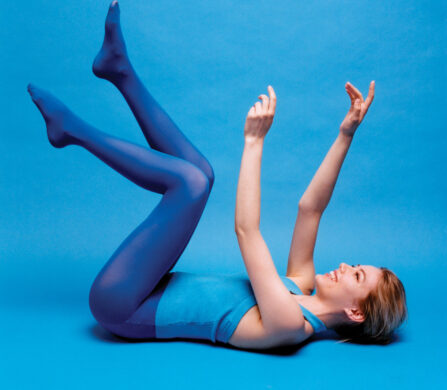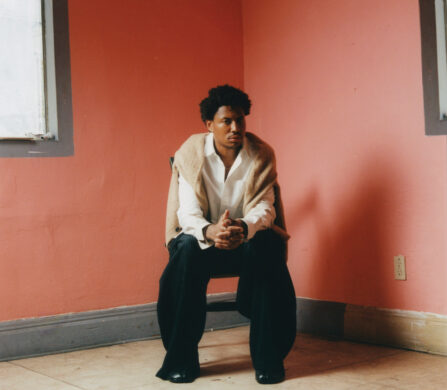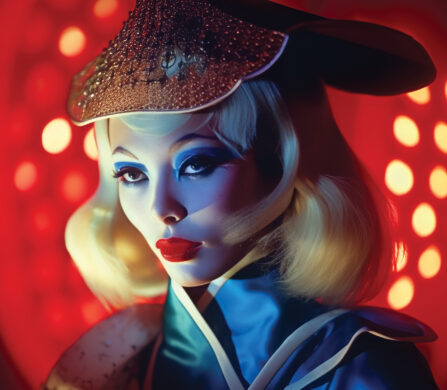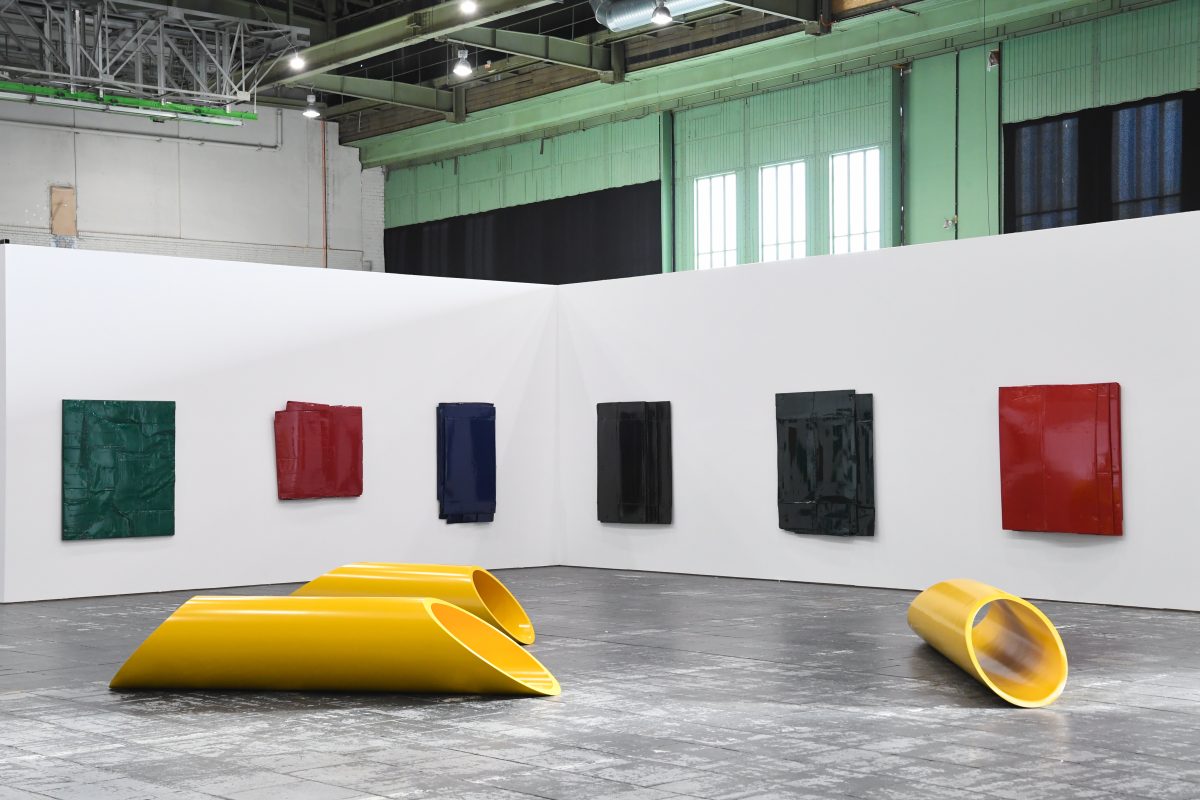
Installation View: BERNAR VENET. 1961 – 2021 | Kunsthalle Berlin – Flughafen Tempelhof. Photo: Daniel Biskup, Courtesy: Stiftung für Kunst und Kultur Bonn. ©Bernar Venet, ADAGP 2022
Cold, barren, silent, determined and meditative—go on a trip and get to know veteran French artist and master sculptor Bernar Venet in the industrial refuge that is Berlin’s Tempelhof airport. Venet’s largest retrospective to date is a slow-burn; a ‘sit-down and have a coffee’ with his expansive artistic output, spanning from the early ‘60s to 2022. Enter the comfortable solace of the decaying airport hangars to find your artistic sensibilities matured, challenged and refined by conceptual works that stretch an ordinary definition of art—spiralling, like Venet’s sculptures, into the realm of possibility.
Until 30 May, the exhibition will be on display in Tempelhof’s hangars 2 and 3. Upon landing outside the airport, lay gaze to the grand brutalist structure, and follow the signs for the exhibition beneath the building’s arches into an almost hidden doorway. The hangar is vast and in itself recalls a piece of minimalist art — a solid, emotionally-unavailable architectural space. Within it sits Venet’s artistic timeline, waiting to be explored. I felt as though I’d journeyed to a faraway temple to meet with some spirit, and in a way, that’s kind of what it was. It’s what we all do when we travel to see any artist’s work that’s not around the corner, more so when they’re dropped within an enigmatic location such as this.
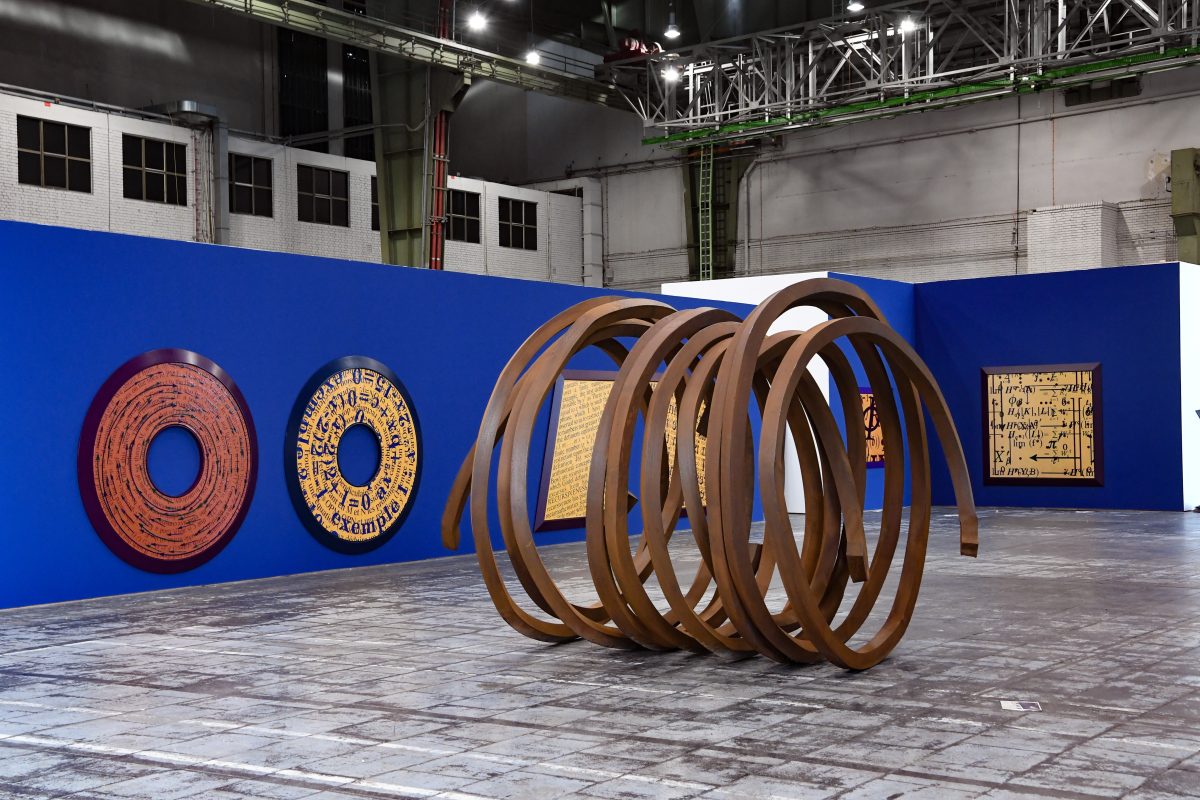
Installation View: BERNAR VENET. 1961 – 2021 | Kunsthalle Berlin – Flughafen Tempelhof. Photo: Daniel Biskup, Courtesy: Stiftung für Kunst und Kultur Bonn. ©Bernar Venet, ADAGP 2022
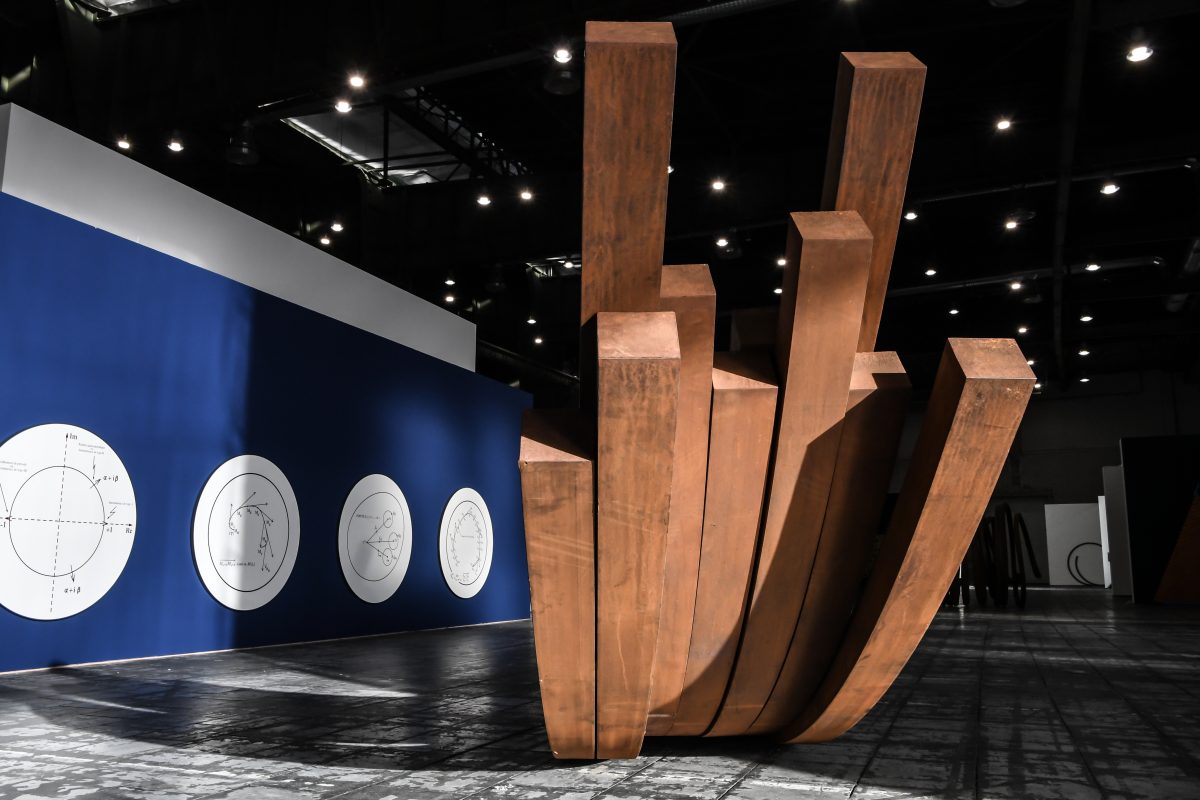
Installation View: BERNAR VENET. 1961 – 2021 | Kunsthalle Berlin – Flughafen Tempelhof. Photo: Daniel Biskup, Courtesy: Stiftung für Kunst und Kultur Bonn. ©Bernar Venet, ADAGP 2022
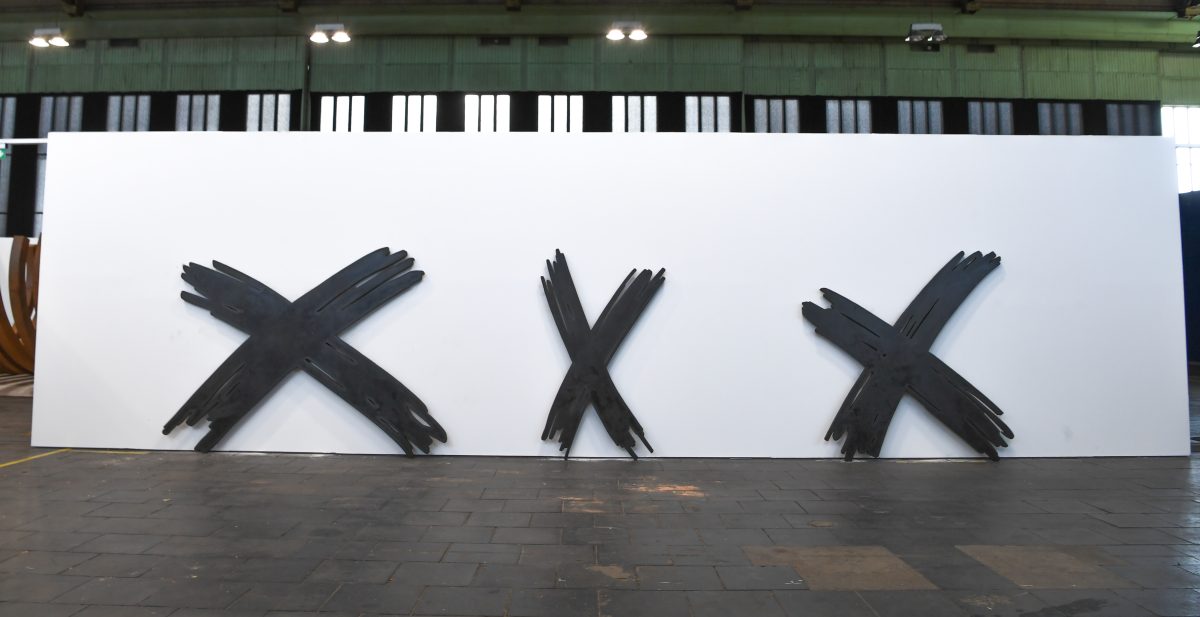
Installation View: BERNAR VENET. 1961 – 2021 | Kunsthalle Berlin – Flughafen Tempelhof. Photo: Daniel Biskup, Courtesy: Stiftung für Kunst und Kultur Bonn. ©Bernar Venet, ADAGP 2022
The retrospective seemingly follows Venet’s timeline and opens with a section dedicated to his early ‘60s works — in it, a collection of pieces all synchronised by the same element, the colour black. One is immediately pulled in by the pile of coal proudly perched in the centre of the room, a youthful revolt against the crisp white walls that surround. The ‘Pile of Coal, 1963’ is a famed work of Venet’s, which continues to alter its shape as it travels through space and time, gallery and exhibition. Across the walls hang an assortment of black monochrome works — some painted with tar, a substance that had a profound effect on Venet — and a range of canvases: from cardboard to a giant mirror. There was a presence in the purity of the works, the different textures each one has, juxtaposing with the white walls. It’s not just that one physically sees their reflection of the daunting black mirror, but that they can’t help but see themselves within all of the blackness that makes up Venet’s honest pieces, each one looking them in the eyes.
Across the exhibition — and across time — we see Venet continue to challenge both his own, and the art world’s definition, of art. A prime example is seen as the exhibition introduces his use of blueprints and mathematics, where math and data begin a tango with art. Showcasing the blueprints to his yellow sculptural tubes (Tubes, 1966) as art themselves, Venet has altered the way we experience an individual work. At first glance and without a matured sensibility for art, this section of the retrospective can be challenging and will only continue to challenge. What is this? Where are all the massive steel sculptures? is a plausible thought. But every piece of the retrospective builds into the next, and to appreciate or better comprehend one section will reward a viewer in the works that follow.
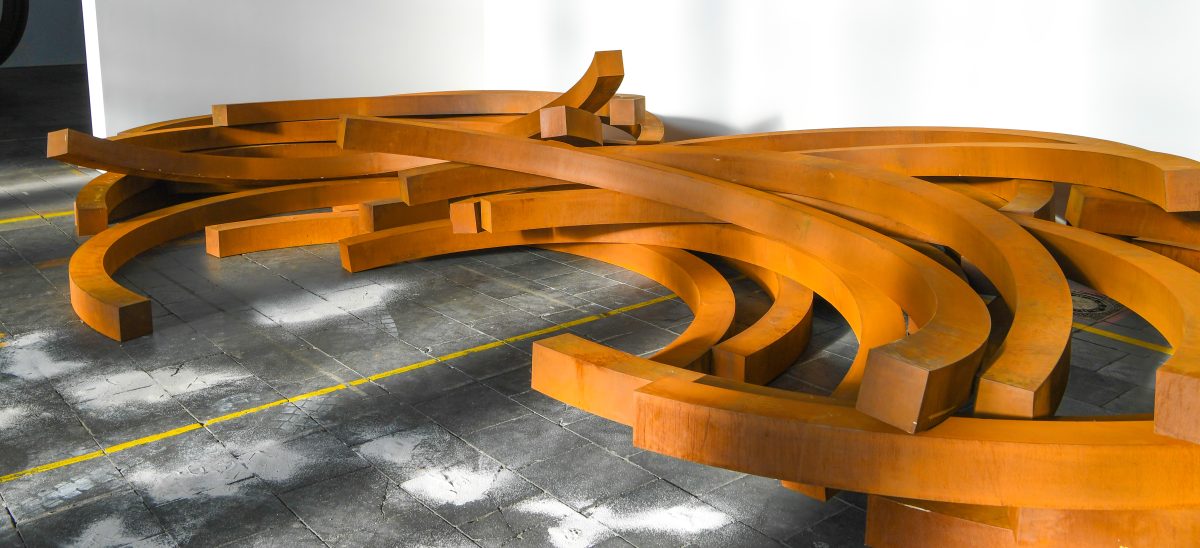
Installation View: BERNAR VENET. 1961 – 2021 | Kunsthalle Berlin – Flughafen Tempelhof. Photo: Daniel Biskup, Courtesy: Stiftung für Kunst und Kultur Bonn. ©Bernar Venet, ADAGP 2022
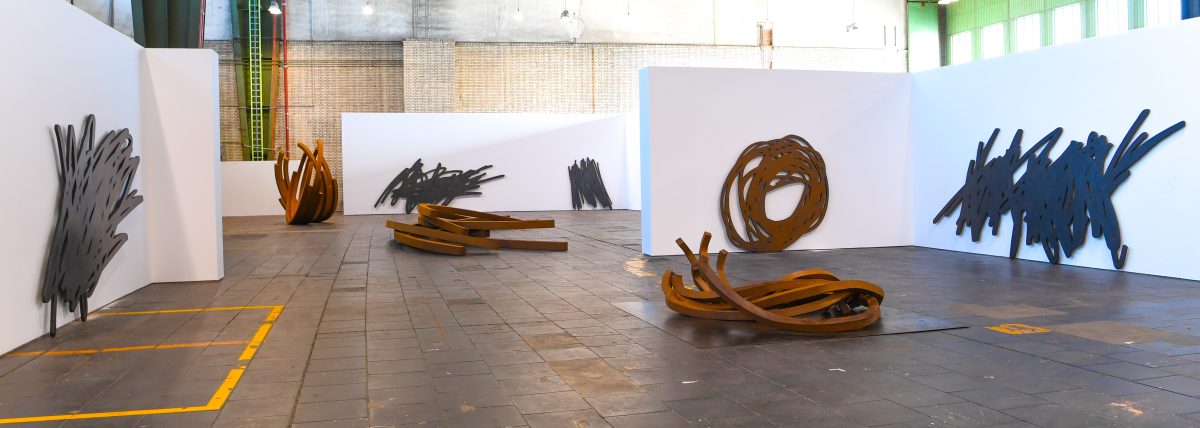
Installation View: BERNAR VENET. 1961 – 2021 | Kunsthalle Berlin – Flughafen Tempelhof. Photo: Daniel Biskup, Courtesy: Stiftung für Kunst und Kultur Bonn. ©Bernar Venet, ADAGP 2022
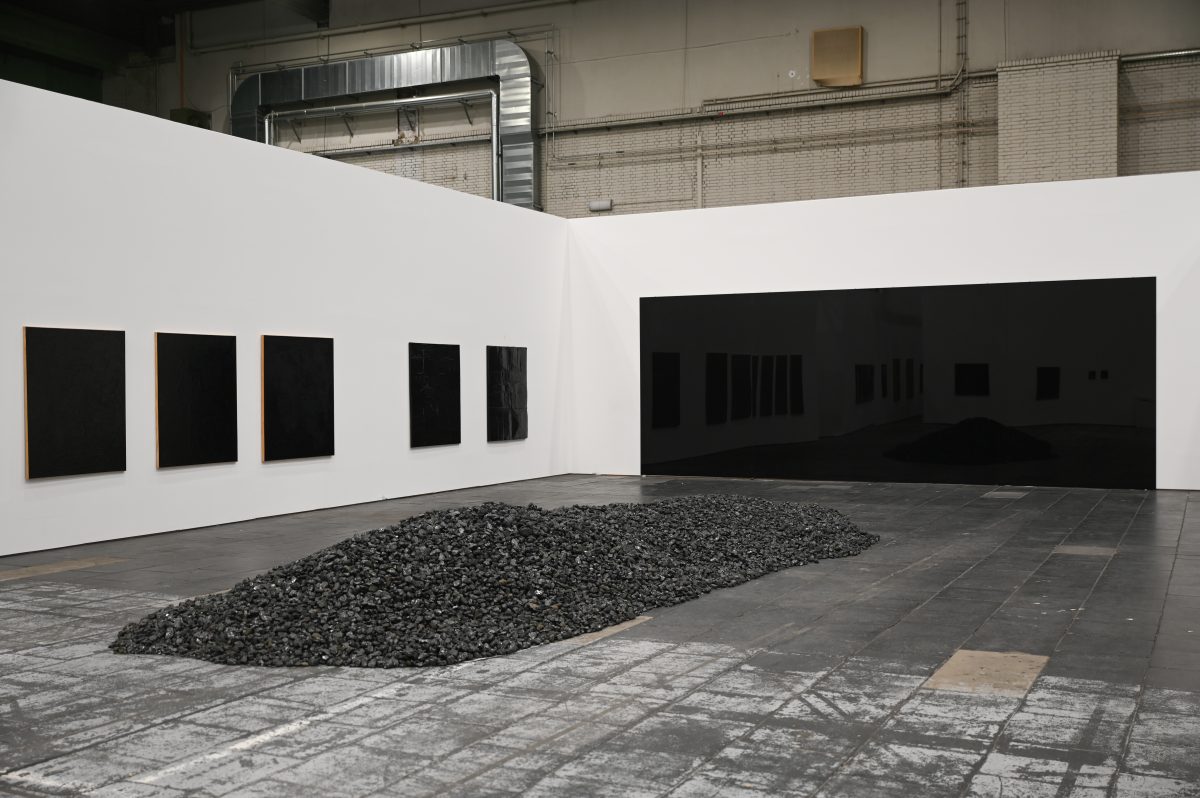
Installation View: BERNAR VENET. 1961 – 2021 | Kunsthalle Berlin – Flughafen Tempelhof. Photo: Daniel Biskup, Courtesy: Stiftung für Kunst und Kultur Bonn. ©Bernar Venet, ADAGP 2022
From walls hung with framed mathematical graphs to massive paintings of equations, as the show continues, so does your sensibility for Venet’s work. I’ve never been one for mathematics — that’s why I pursued writing — but to make sense of the math presented in Venet’s work is missing the point; so much so, the artist went ahead and made it an impossible feat by painting equations atop of equations, chopping up the frames to render them unfinished. Take Gold Triptych with “negation,” 2011, for example. The ‘math’ behind these works is that by using mathematics as the subject, the works are then negated of all room for meaning and interpretation; they are purely rational and emotionless.
Of course, with numbers and art intertwining, in 2022 reminiscing on NFTs is inevitable. In an almost “bonus” section to the retrospective, one discovers how Venet presaged the art world’s digital gold rush in his work New York Stock Exchange Transaction, 1975 — while also dipping their toes into the curation of digital NFT works by other artists of today, all of whom toy with notions of value and the platform’s capabilities.
The retrospective then builds towards Venet’s iconic steel sculptures and works with three-dimensional lines. As the viewer delves deeper into this second half of the show, it becomes apparent that everything witnessed before has now guided them to this. I recommend getting a coffee at the cafe before continuing, or resting your legs in the film booth if you’re someone who takes their time going through all of the work. Scattered from one hangar into the next is an amalgam of rustic, patinated-steel scribbles and beams. They appear ancient and extraterrestrial in their determination, as though they’ve always existed and touched down from outer space.
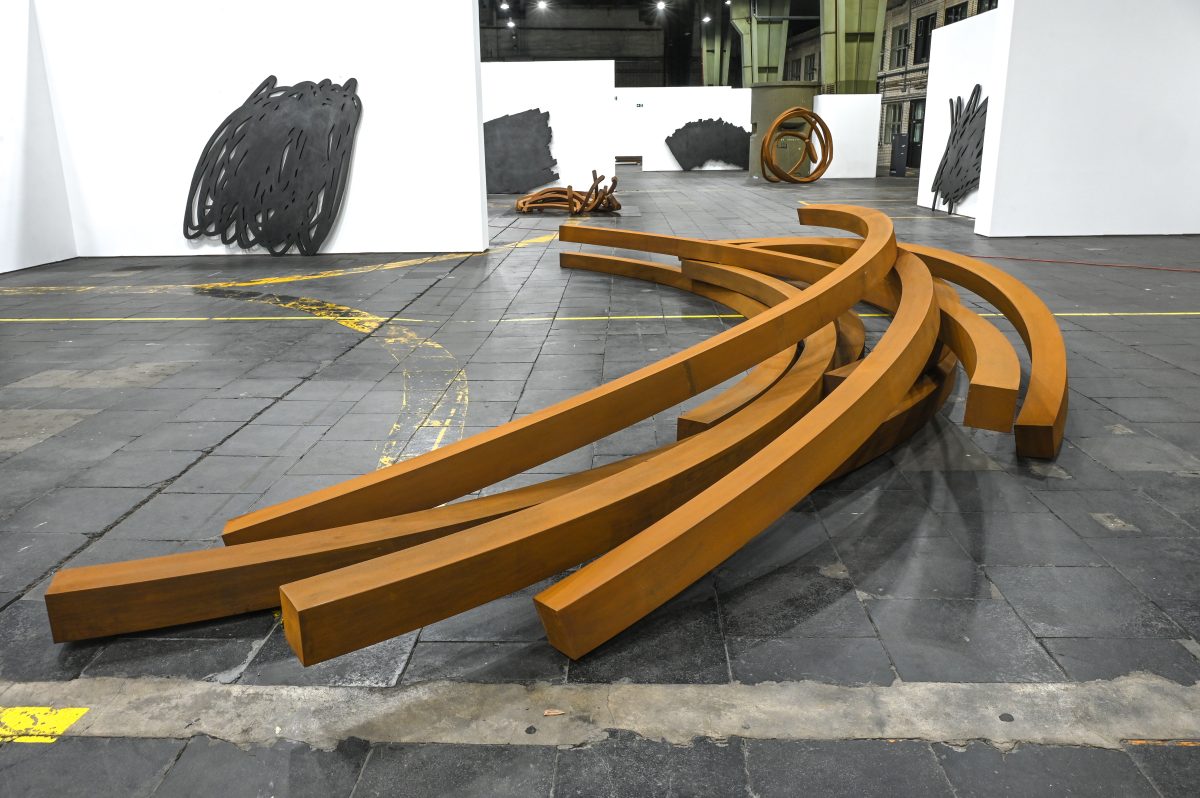
Installation View: BERNAR VENET. 1961 – 2021 | Kunsthalle Berlin – Flughafen Tempelhof. Photo: Daniel Biskup, Courtesy: Stiftung für Kunst und Kultur Bonn. ©Bernar Venet, ADAGP 2022
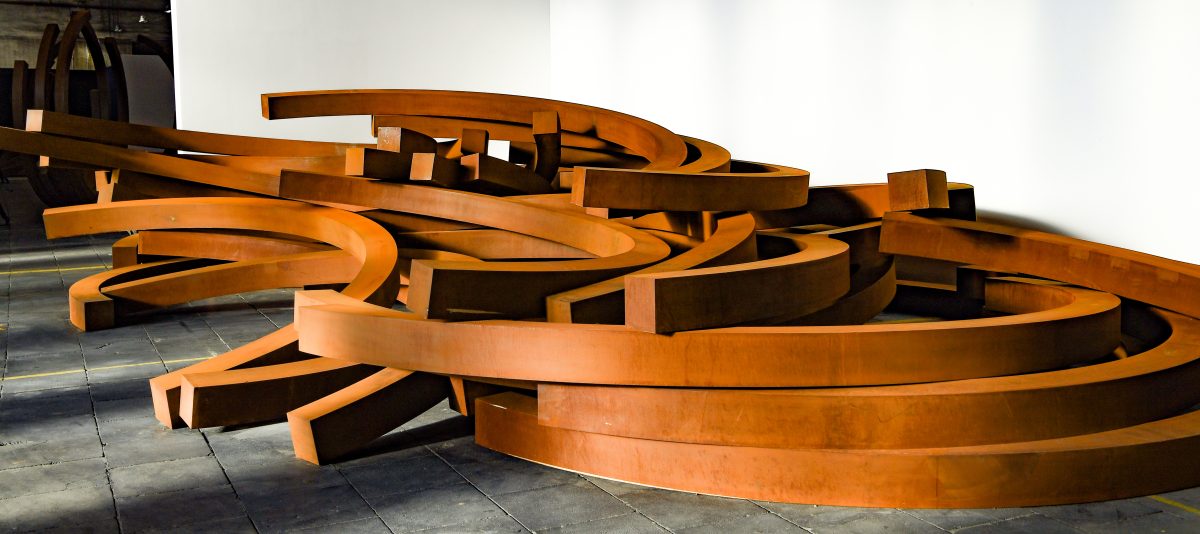
Installation View: BERNAR VENET. 1961 – 2021 | Kunsthalle Berlin – Flughafen Tempelhof. Photo: Daniel Biskup, Courtesy: Stiftung für Kunst und Kultur Bonn. ©Bernar Venet, ADAGP 2022
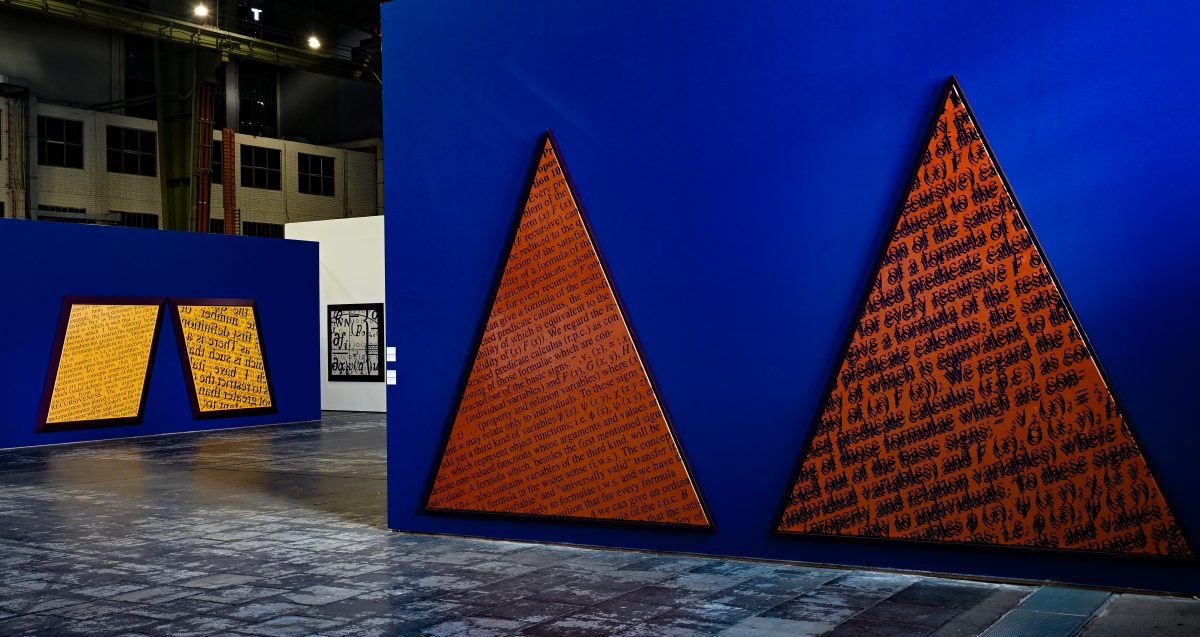
Installation View: BERNAR VENET. 1961 – 2021 | Kunsthalle Berlin – Flughafen Tempelhof. Photo: Daniel Biskup, Courtesy: Stiftung für Kunst und Kultur Bonn. ©Bernar Venet, ADAGP 2022
What’s intriguing here is how Venet’s artworks open up a unique dialogue with the audience, inviting the viewer to question the story of their formation. In the various works titled The Steel Bar and the Pictorial Memory of the Gesture, 2022, one notices the role the steel bar has played in telling the story of the paint that surrounds it, and calls into question the hand-print painted next to it. Or, in a grander spectacle, take Venet’s Domino Effect, 2021-2022 — a pile of massive steel arches, lying on the ground atop one another to form their own unique structure. In the video which accompanies this work, the viewer sees Venet perform its creation. As he lines up the steel arches like dominos — creating one sculptured formation — and simply lights the fuse, by tipping one over with a forklift, causing the entire thing to crumble disorderly, both telling the story and creating a new sculpture.
As the retrospective comes to an end, one can’t help but appreciate Bernar Venet’s ambition as an artist — 60 years and running, continuing to challenge artistic boundaries. While his works seem to sit in Kunsthalle Berlin purposely devoid of feeling, I couldn’t help myself but feel a grand sense of optimism emitting off of them and the stories they tell. Like in his work Accident, 1996 – 2022, in which the artist lines up steel bars, only to trigger the dissemination of their formation against a wall — leaving behind marks that cement their disorder’s place in history.
I recalled an earlier, somewhat heady thought of mine, that Venet’s sculptures stand infinitely like artefacts. I’d jotted down in my notebook that if mankind were to go extinct and the aliens ever came, I’d hoped they could see the work in this retrospective. But come to think of it, the optimism in Venet’s sculptures is already scattered around the globe. About 60 meters tall along a Belgian highway as the world’s tallest public artwork. Even on the other side of Berlin in Schoenenberg — a city to whom Venet is no stranger. Find yourself wandering the earth, and you might just stumble upon one of the artist’s steel lines; monuments, challenging the perceived limitations of art.
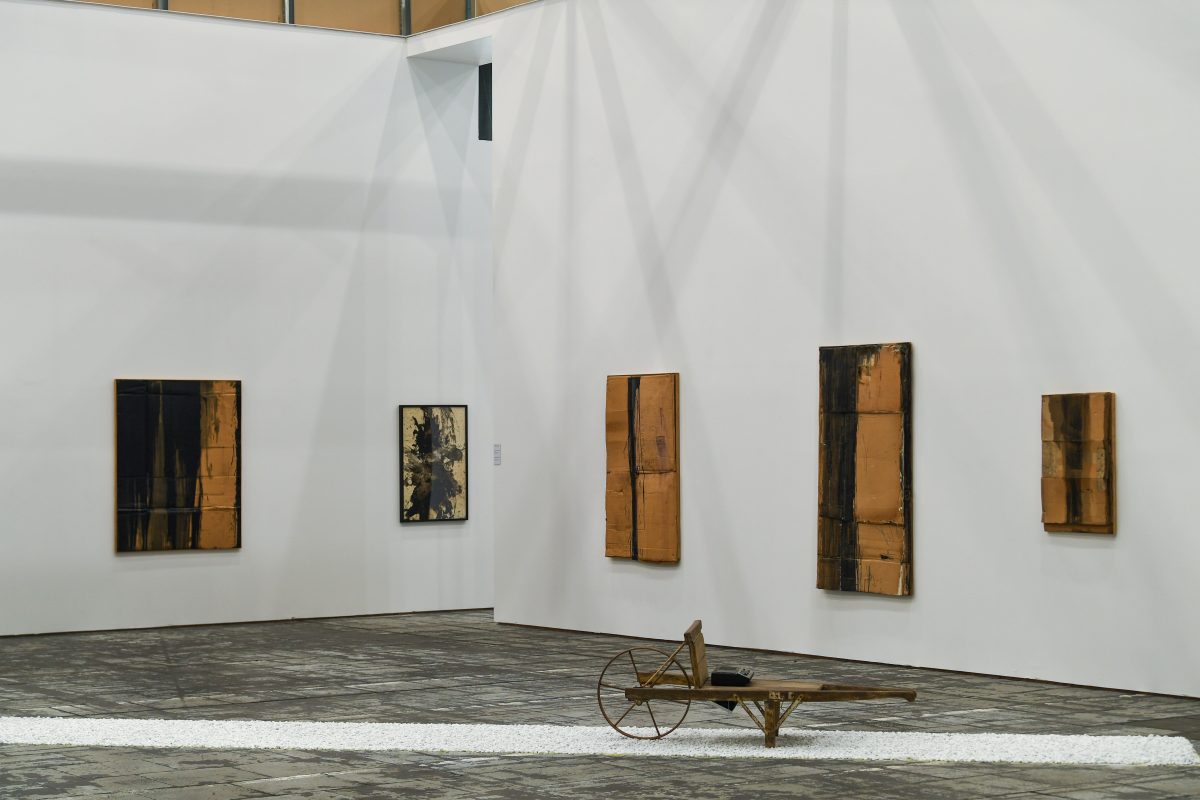
Installation View: BERNAR VENET. 1961 – 2021 | Kunsthalle Berlin – Flughafen Tempelhof. Photo: Daniel Biskup, Courtesy: Stiftung für Kunst und Kultur Bonn. ©Bernar Venet, ADAGP 2022
Bernar Venet, 1961 – 2021. 60 Years of Performance, Paintings and Sculptures is on view at the Kunsthalle Berlin in Tempelhof Airport until 30 May 2022.
words. Lucas Pantoja


Schön! Magazine is now available in print at Amazon,
as ebook download + on any mobile device














